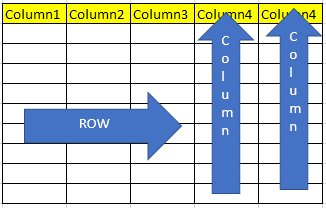Archiving PPI tables
Teradata provides various indexing mechanisms, and Partitioned Primary Index (PPI) is one of them. PPU tables are useful in improving the performance of queries that utilize range-based data. It helps to restrict data retrieval to the partitions in which rows are present. In normal cases, rows are inserted into a table, they are stored in an AMP, and arranged by their row hash order. With the table defined with PPI, the rows are sorted by their partition number and are stored in a collective manner in their partitions. Within each partition, they are arranged by their row hash. Rows are assigned to a partition based on the partition expression defined.
Teradata provides two types of partitions on tables as show in the following figure:
- Row level partition
- Column level partition

You can perform an all-AMPs archive on one or more partitions of a table rather than performing a full-table backup. The ability to select partitions from PPI tables is limited to all-AMP archives...





























































